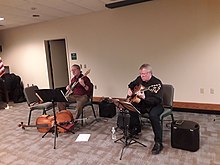파르옥시프로피온
Paroxypropione | |
| 임상 데이터 | |
|---|---|
| 상호 | 프레난톨, 프레노몬, 효페논, 파록손, 포시피오네, 프로페논, 기타 |
| 기타 이름 | 파라옥시프로피오페논, H-365, NSC-2834, 4'-히드록시프로피오페논,에틸p-히드록시페닐케톤, p-프로피오닐페놀, 파르옥시프로피오페논, 파라히드록시프로피오페논, PHP |
| 약물 클래스 | 비스테로이드성 에스트로겐(안티고나도트로핀) |
| ATC 코드 |
|
| 법적 상태 | |
| 법적 상태 |
|
| 식별자 | |
| |
| CAS 번호 | |
| PubChem CID | |
| 켐스파이더 | |
| 유니 | |
| CompTox 대시보드 (EPA ) | |
| ECHA 정보 카드 | 100.000.676 |
| 화학 및 물리 데이터 | |
| 공식 | C9H10O2 |
| 몰 질량 | 150.15g/140g−1/140g/150g |
| 3D 모델(JSmol) | |
| |
| |
파라옥시프로피오페논으로도 알려진 파록시프로피온은 스페인과 이탈리아에서 의학적으로 항산화제로 사용되어 왔지만 더 이상 시판되지 않는 [1][2][3][4]것으로 보이는 합성 비스테로이드 에스트로겐이다.그것은 [1]1902년에 처음 합성되었다.이 약의 항나트륨 성질은 1951년에[3] 발견되었고,[5] 그 직후 임상 용도로 사용되기 시작했다.
약리학
약역학
파르옥시프로피온은 구조적으로 메틸파라벤과 같은 p-히드록시벤조산 [6][7]및 파라벤과 밀접하게 관련되어 있으며, 또한 디에틸스틸베스트롤(실제로 활성대사물로서 파르옥시프로피온을 생성함) 및 노닐페놀과 같은 알킬페놀과 매우 유사하며, 이들 역시 모두 [8][9]에스트로겐이다.이 약물은[4] 에스트로겐 수용체에 대한 친화력이 상대적으로 낮으며, 예를 들어 [10][11]하루에 0.8~1.6g/h의 유의한 에스트로겐 및 항당향성 효과를 얻기 위해 높은 용량으로 투여되어야 한다.에스트로겐 활성의 0.1%, 에스트론의 [12]항당성 효력의 0.5% 미만이다.
화학
합성
보고된 최고 수율은 약 96%로 페놀과 [13]염화 프로피오닐 사이의 수율입니다.이 메커니즘은 페닐프로피온산염을 주기 위해 초기 에스테르화를 수반할 가능성이 높으며, 그 후 Fries 전위 과정을 거친다.
파생상품
파르옥시프로피온은 디에틸스틸베스트롤과 디에네스트롤의 [14][15]화학 합성 전구체이다.
사회와 문화
이름
브랜드명은 Frenantol, Frenormon, Hyophenon, Paroxon, Possipione, Profenone, 기타 다수이며, 이전 개발 코드명은 NSC-2834이며, P.O.P. 또는 4-히드록시 프로피오페논이라고도 합니다.
조사.
파옥시 프로피온은 유방암 [16][17][18]치료에 연구되고 사용되었다.
레퍼런스
- ^ a b Elks J (14 November 2014). The Dictionary of Drugs: Chemical Data: Chemical Data, Structures and Bibliographies. Springer. pp. 662–. ISBN 978-1-4757-2085-3.
- ^ Index Nominum 2000: International Drug Directory. Taylor & Francis. January 2000. pp. 796–. ISBN 978-3-88763-075-1.
- ^ a b Paulsen CA, Mortimore GE, Heller CG (August 1951). "The pituitary action and estrogenic effect of parahydroxy-propiophenone". The Journal of Clinical Endocrinology and Metabolism. 11 (8): 892–4. doi:10.1210/jcem-11-8-892. PMID 14861299.
- ^ a b Mombelli E (January 2012). "Evaluation of the OECD (Q)SAR Application Toolbox for the profiling of estrogen receptor binding affinities". SAR and QSAR in Environmental Research. 23 (1–2): 37–57. doi:10.1080/1062936X.2011.623325. PMID 22014213. S2CID 19751228.
- ^ Buu-Hoi NP, Xuong ND, Lavit D (1953). "Fluorine-containing analogs of 4-hydroxypropiophenone". The Journal of Organic Chemistry. 18 (8): 910–915. doi:10.1021/jo50014a002. ISSN 0022-3263.
- ^ Chambers PL, Günzel P (12 March 2013). Mechanism of Toxic Action on Some Target Organs: Drugs and Other Substances. Springer Science & Business Media. pp. 276–. ISBN 978-3-642-67265-1.
- ^ Gottschlich R, Metzler M (January 1979). "High-pressure, reverse-phase partition chromatograhy separation of diethylstilbestrol metabolites and analogs". Analytical Biochemistry. 92 (1): 199–202. doi:10.1016/0003-2697(79)90645-6. PMID 426279.
- ^ Jones RE, Lopez KH (28 September 2013). Human Reproductive Biology. Academic Press. pp. 46–. ISBN 978-0-12-382185-0.
- ^ Pugazhendhi D, Pope GS, Darbre PD (2005). "Oestrogenic activity of p-hydroxybenzoic acid (common metabolite of paraben esters) and methylparaben in human breast cancer cell lines". Journal of Applied Toxicology. 25 (4): 301–9. doi:10.1002/jat.1066. PMID 16021681. S2CID 12342018.
- ^ De Vega R (1955). "Protein breakdown before and after operations. Influence of growth hormone and of inhibitors of the pituitary adrenal system". Cirug., Ginecol. Urol. 9: 289–326.
- ^ Bussolati C, de Carneri I, Castellino S, Marinoni V, Sperzani GL (July 1967). "Treatment of experimental and clinical schistosomiasis with hormonal inhibitors of ovulation". The American Journal of Tropical Medicine and Hygiene. 16 (4): 497–9. doi:10.4269/ajtmh.1967.16.497. PMID 5006470.
- ^ Scott CC, Kroc RL, Stasilli NR (June 1952). "Metabolic and toxicity studies on parahydroxypropiophenone". Endocrinology. 50 (6): 607–11. doi:10.1210/endo-50-6-607. PMID 12980070.
- ^ Murashige R, Hayashi Y, Ohmori S, Torii A, Aizu Y, Muto Y, Murai Y, Oda Y, Hashimoto M (2011). "Comparisons of O-acylation and Friedel–Crafts acylation of phenols and acyl chlorides and Fries rearrangement of phenyl esters in trifluoromethanesulfonicacid: effective synthesis of optically active homotyrosines". Tetrahedron. 67 (3): 641–649. doi:10.1016/j.tet.2010.11.047. hdl:2115/44794.
- ^ William Andrew Publishing (22 October 2013). Pharmaceutical Manufacturing Encyclopedia, 3rd Edition. Elsevier. pp. 1286, 1290. ISBN 978-0-8155-1856-3.
- ^ Szmant HH (1989). Organic Building Blocks of the Chemical Industry. John Wiley & Sons. pp. 532–. ISBN 978-0-471-85545-3.
- ^ Maconi G (June 1955). "[Hydroxypropiophenone in the therapy of metastases of carcinoma of the breast]" [Hydroxypropiophenone in the therapy of metastases of carcinoma of the breast]. Il Farmaco; Edizione Pratica (in Italian). 10 (6): 291–9. PMID 13241536.
- ^ Stoll BA (August 1956). "P-hydroxypropiophenone for advanced breast cancer: a preliminary report". The Medical Journal of Australia. 43 (5): 181–3. doi:10.5694/j.1326-5377.1956.tb56562.x. PMID 13358357. S2CID 22364847.
- ^ Grapulin G (June 1967). "[Experience with paraoxypropiophenone (Frenantol) in the treatment of dysplasias and metastasized carcinoma of the breast]" [Experience with paraoxypropiophenone (Frenantol) in the treatment of dysplasias and metastasized carcinoma of the breast]. Chirurgia Italiana (in Italian). 19 (3): 306–12. PMID 5188348.


